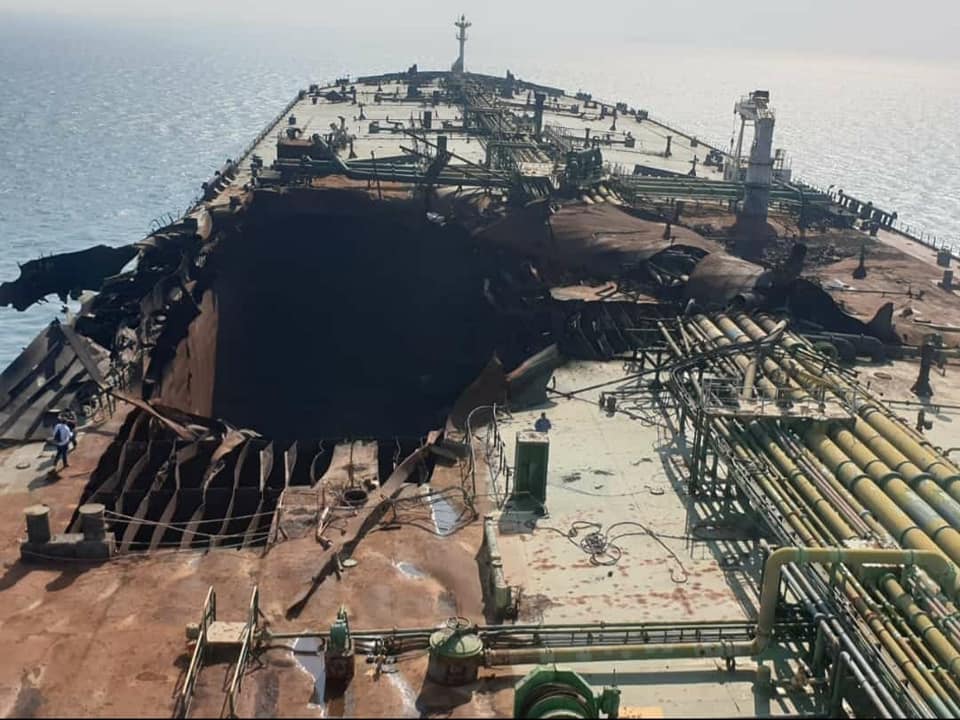“Shipbreaking” # 62
double issue, October-November-December 2020-January-February-March 2021
122 pages, 112 sources, 381 photos
“Shipbreaking” is an unexpected and privileged observatory to analyze the trends of the global business and to identify its shortcomings.
The average price per ton of vessels scrapped is increasing. It reaches peaks of 750 to 850 US$ for tankers with stainless steel tanks (see p. 13).
Between October 2020 and March 2021, the 342 ships that were scrapped threw out dollars over Asian shipbreaking yards and no tax havens. In this game, the British Virgin Islands has been glittering. At least 40 million US$ from scrapping in India, Pakistan and Bangladesh has transited in the 151 km2 territory under British control. The sale for scrapping of the Berge Kibo alone brought in 16 million US$ for Silver United Ltd, which is registered in these Caribbean islands (see p. 102).
The Sichem Pandora, sadly known for her hit-and-run collision with the French fishing boat Klein-Familie in 2006, was eventually scrapped in India (see The END, pp. 120-122 and p. 74).
The Mero Star and the Raouf H (p. 31 and 33) were scrapped in Turkey. They had just arrived at Beirut with grain when they were hit by the August 4, 2020 explosion of ammonium nitrate abandoned in hangar n°12.
A usurper, the alleged Talent Ace with a fake IMO number and a Togolese flag was seized in South Korea and broken up on the spot. Under the name Talent Ace was hiding the Xin Sheng Hai involved in 2017 in illegal coal trafficking with North Korea (See p. 40).
Liners filed up with asbestos and souvenirs are queueing to be scrapped and some are caught up by mirific schemes such as the Satoshi, the crypto cruise ship with a bitcoin smell (see p. 15-16).
The tanker Sam, ex-Samho Crown, was scrapped in Pakistan. At the end of January 2020, during gas freeing operations off the United Arab Emirates coast, a tank exploded, killing five and injuring eight. The tanker arrived with ashes and twisted scrap metal at a Pakistani yard. The weird and cruel story for the crews of this doomed tanker is detailed on p. 69-70.
 Sam, November 27, 2020, approaching the shipbreaking yards. © Gadani Ship Breaking Yard
Sam, November 27, 2020, approaching the shipbreaking yards. © Gadani Ship Breaking Yard
Three ships involved in cocaine smuggling were scrapped, the B Atlantic, Blue Sea and Nehir. This latter rogue ship was destroyed in a radical and original way. She was scuttled by her crew in the Bay of Biscay (see history and cartography p. 6-7).
The Covid-19 pandemic is fatal at sea, as in the suicide case of a young man of 23 who had been on board the Sea Princess for 13 months (see p. 70) and in the scrapyards. The cruise ships, tankers and bulkers are rushing in while there is a shortage of manpower due to lock-down or contamination. The workforce is facing aggravated risks of fracture, crushing or poisoning (see “Death on the shipbreaking yards”, p. 4-5).
In the flow of information from “Shipbreaking” there is also good news. Most of the ex-VLCCs (Very Large Crude Carriers), which have been converted to VLOCs (Very Large Ore Carriers), have been scrapped (p. 102-105). Their structural fragility had been revealed by the sinking of the Stellar Daisy in the South Atlantic on March 31, 2017 (22 seamen lost at sea, 2 saved). On the other hand, “Shipbreaking” observes that at a slow but progressive pace, more and more EU-approved yards are taking delivery of oil or chemical tankers, which will eventually avoid a number of hazardous convoys between Russia, Scandinavia and Turkish or Asian yards.
Link to “Shipbreaking” # 62 (pdf – 19.7 Mo)
 Imprimer cet article
Imprimer cet article









